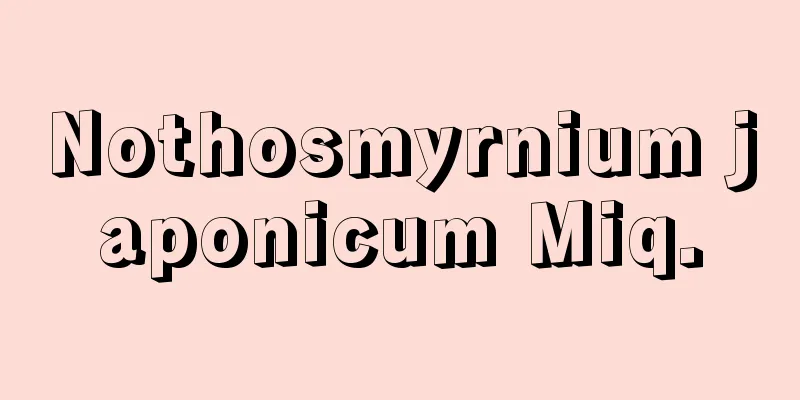Banner

|
A decoration that shows the might of Buddhas and Bodhisattvas. It comes from the Sanskrit word patākā and originates from the military flags of ancient India. It was originally used as the emblem of Buddhist sects, but later became a decoration hung inside temples and temple grounds during Buddhist ceremonies and sermons. In terms of material, most banners are cloth rags, but there are also gilt bronze and jade banners. Depending on the purpose, they are called inner and outer battle banners, ablution banners, myoka banners, and funeral banners. Depending on the color and pattern, there are various types such as blue banners, five-color banners, Buddha statue banners, Bodhisattva banners, seed banners, and Samaya banners. Usually, a rectangular banner body with a tongue is attached below a triangular banner head with a tongue, banner handles on both sides, and banner feet below the banner body. The banner is usually nailed to a size of 3 to 4 tsubo (10 to 13 m2), and is often hung from a hanging metal fitting at the top of a pole. Gilt-copper banners are made of gilt-copper plates with openwork and line engravings, which are joined together with hinges and wire, while tama banners have various balls attached to them. In Japan, there are many excellent items from the Asuka and Nara periods, and among the artifacts handed down from Horyuji Temple are the famous Kando Obata (Nationally Designated Important Cultural Property) made from Shokkokin and associated with Prince Shotoku, and the 5-meter-long gilt bronze kanjoban (National Treasure, Tokyo National Museum), a tribute treasure, and the Shosoin Repository also contains several hundred brocade and silk banners used when the memorial service for the first anniversary of Emperor Shomu's death was held at Todaiji Temple, as well as four gilt bronze banners. Among the artifacts from the late Heian period, two banner heads from Chusonji Konjikiin in Iwate and a gilt bronze banner measuring 3.3 square meters with a Karyobingamon motif are well known. We can get an idea of what jade flags looked like in the Heian period from the picture on the inside cover of the Angakugyo chapter of the Heike Nokyo sutra at Itsukushima Shrine in Hiroshima, but no examples from that time have survived, and most of the flags date from the Muromachi period or later, when jade flags were used on gilt bronze flag legs. [Harada Kazutoshi] Source: Shogakukan Encyclopedia Nipponica About Encyclopedia Nipponica Information | Legend |
|
仏(ぶつ)・菩薩(ぼさつ)の威徳を示す荘厳(しょうごん)具。梵語(ぼんご)のパターカーpatākāに由来し、古代インドの軍旗が源流で、初めは仏教教団の標章に用いられたが、のちに法会や説法のとき堂内や境内にかける荘厳具となった。材質的には布製の裂(きれ)幡が多く、ほかに金銅幡、玉(ぎょく)幡などがあり、用途により内・外(げ)陣幡、灌頂(かんじょう)幡、命過(みょうか)幡、送葬幡などとよばれる。また色や模様によって青幡、五色幡、仏像幡、菩薩幡、種子(しゅじ)幡、三昧耶(さまや)幡など各種ある。通常、舌(ぜつ)をもつ三角形の幡頭の下に、長方形の幡身、その両わきに幡手、幡身の下に幡足をつける。幡身は3~4坪にくぎられるのが通例で、竿(さお)の先端につけた竜頭の口に吊(つり)金具でかけて用いることが多い。金銅幡は透(すかし)彫り、線彫りを施した金銅板を蝶番(ちょうつがい)、針金でつなぎ合わせ、玉幡は各種の玉をつないだものである。 わが国では飛鳥(あすか)・奈良時代に優品が多く、法隆寺伝世品には蜀江錦(しょっこうきん)で仕立てた聖徳太子ゆかりの間道(かんどう)小幡(国指定重要文化財)、全長5メートルに及ぶ献納宝物の金銅灌頂幡(国宝、東京国立博物館)が名高く、正倉院にも聖武(しょうむ)天皇一周忌法要が東大寺で営まれたとき使われた数百旒(りゅう)の錦・羅(ら)の幡のほか、金銅幡四旒など多数が残っている。平安後期の遺品では岩手・中尊寺金色院の幡頭二枚と、迦陵頻伽文(かりょうびんがもん)を表した幡身一坪の金銅幡がよく知られる。玉幡は広島・厳島(いつくしま)神社の「平家納経」の安楽行品(ぼん)の見返しに描かれた絵によって平安時代の姿をうかがい知ることができるが、当時の遺例はなく、金銅板製の幡足などに玉を用いた室町時代以降のものがほとんどである。 [原田一敏] 出典 小学館 日本大百科全書(ニッポニカ)日本大百科全書(ニッポニカ)について 情報 | 凡例 |
<<: Barn - barn (English spelling)
Recommend
Mr. Minagawa
A medieval and early modern samurai family from Sh...
House of Habsburg - Habsburger
The former Austrian imperial family has been one ...
Unit bank (English spelling)
…The year after the collapse of the Soviet Union ...
Forbidden stick - Imizue
… [Hiromitsu Iwakura] [Folklore] The Kojiki state...
Epilobium angustifolium, great willow herb
A perennial plant of the Onagraceae family, also k...
Leptomitus lacteus (English name) Leptomitus lacteus
…[Tsubaki Keisuke]. . . *Some of the terminology ...
Audio coding
A method of expressing voice waveform information...
hemichorea
… [Other chorea] In addition to the above, sympto...
Perchloric Acid - Perchloric Acid
HClO 4 (100.46). It is obtained by adding concent...
Fiji - Republic of Fiji (English spelling)
An island nation located in eastern Melanesia in ...
Obermann - Obermann
...But his marriage was a failure, and he lived a...
Walpole's Peace - Walpole's Peace
… Walpole adopted a policy of peace abroad, and f...
Blue-green landscape
A term used in oriental painting. Landscape painti...
masking
Also called shielding. Eliminating interference b...
senarmontite
…Antimony minerals include stibnite (Sb 2 S 3 ) ,...









